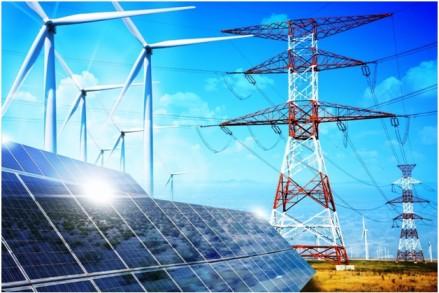Over the years, the electricity sector has begun to receive a lot of attention and investment that has prompted the reformation of state electricity boards. Power distribution companies in India have introduced various plans to mitigate the aggregate technical and commercial losses (AT&C) losses and the formation of a definitive regulatory framework. Moreover, the government of India has a substantial investment sum in the electricity sector via APDRP and RGGVY. With these plans, the government aims to provide uninterrupted access to electricity in all parts and reduce the AT&C losses to approximately 15% across the nation.
Various effective policies and regulations have already been initiated, and renewable energy in India is among the prominent initiatives. The government is also encouraging participation from the private player to enhance electricity distribution in the country further. There are undoubtedly significant factors that contribute to the power distribution in India, and below, we are discussing them.
Growing Demand for Electricity
With the growing population and urbanization, the demand for power has been skyrocketing. According to the Integrated Energy Policy, in order to eliminate poverty, India currently needs 8% annual economic growth until 2032. And, during this time frame, the power capacity needs to grow at a minimum of 800 GW.
- Code of Supply and Performance Compliance–
Supply code consists of down standards as well as procedures to recover from the electricity charges, disconnections, billing cycles, service restoration, metering, etc. So to protect the citizen’s interest, the Environment Assessment 2003 required the SERCs to lay down their performance standards for the distribution of the licenses.
The commissions also need to state the penalties and compensations needed to be paid to the affected parties by the licensees, if the latter fails to adhere to the standards. Eventually, the supply code and performance standards assist in improving the operational efficiency of power distribution.
- Governing Distribution Reforms
Implementing the integrated SEBs into operational units is among the essential requirements of the EA 2003. And the real potentials of unbundling can be obtained via implementing vest practicing and professional management by the PPP models. Considering the political sensitivity, issues regarding asset transfer and employee reservation, power transmission companies in India are looking out for Distribution Franchisee to ensure efficiency.
- Harnessing the Potentials of IT Sector
Implementing IT systems and practices can significantly help in improving operations and customer services. There has been increased adoption of SCADA for efficient distribution network management. Call center, automated billing, spot billing, and energy accounting are some of the popular IT systems and practices that are being implemented.
Furthermore, the government is integrating advanced technologies, especially in remote metering, billing fault reporting, substation operation, enterprise solutions, etc. Accounting and auditing in the electricity sector are being taken very gravely.
- Increased Consumer Awareness
SEBs, as well as private power transmission companies in India, are highly invested in consumers’ interest. Connections have become highly straightforward; bill payments have been streamlined, queries and complaints are addressed more efficiently. Call centers have been established to address supply as well as billing complaints, especially.
An SMS-based management system has been placed where complaints are efficiently directed via SMS. All these new changes have significantly improved customers’ satisfactory across various segments. This satisfaction has turned to increased people’s willingness to pay more for better power services.
- A Shift Towards DSM
The introduction of DSM is directed towards reducing the overall electricity demand, and many states are encouraging the implementation of DSMs. Many SERCs have extended the time of the day plans with different tariffs, especially for HT consumers. Energy-efficient devices are also being encouraged to ensure the optimum use of energy.
The power distribution system in India has witnessed significant growth. Additionally, with the entry of private transmission companies in India and various technological-powered plans, the future of the electricity sector in the country seems to be quite bright.
Conclusion: The power distribution system in India depends on various factors. Read on to ETV Bharat News and get regularly updated on these critical facets and their contributions.
























































